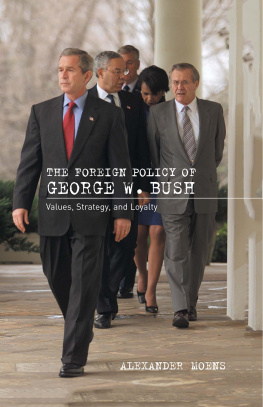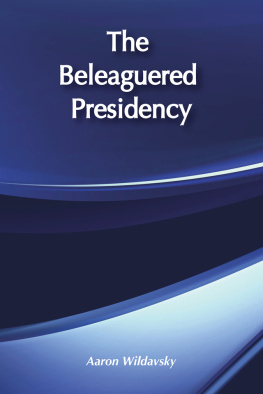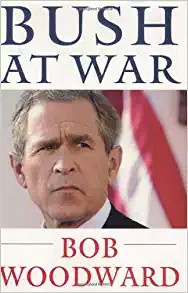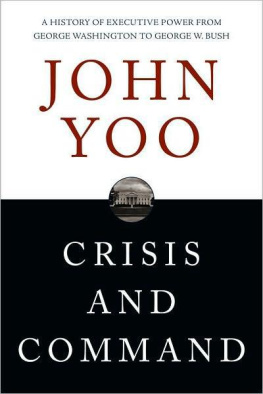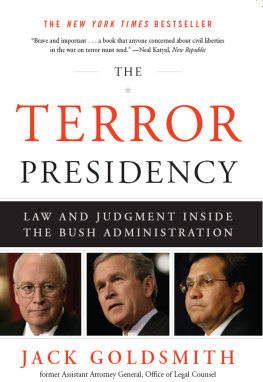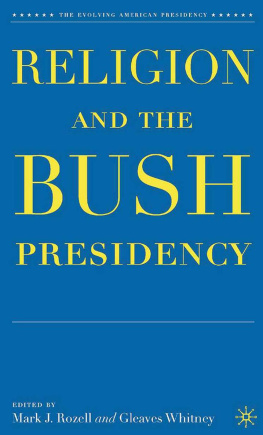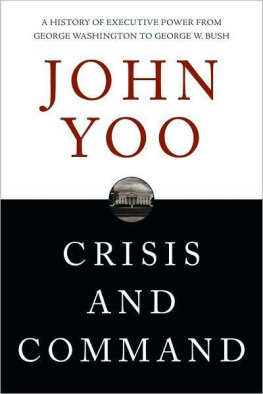The Semi-Sovereign Presidency
Transforming American Politics
Lawrence C. Dodd, Series Editor
Dramatic changes in political institutions and behavior over the past three decades have underscored the dynamic nature of American politics, confronting political scientists with a new and pressing intellectual agenda. The pioneering work of early postwar scholars, while laying a firm empirical foundation for contemporary scholarship, failed to consider how American politics might change or to recognize the forces that would make fundamental change inevitable. In reassessing the static interpretations fostered by these classic studies, political scientists are now examining the underlying dynamics that generate transformational change.
Transforming American Politics brings together texts and monographs that address four closely related aspects of change. A first concern is documenting and explaining recent changes in American politicsin institutions, processes, behavior, and policymaking. A second is reinterpreting classic studies and theories to provide a more accurate perspective on postwar politics. The series looks at historical change to identify recurring patterns of political transformation within and across the distinctive eras of American politics. Last and perhaps most importantly, the series presents new theories and interpretations that explain the dynamic processes at work and thus clarify the direction of contemporary politics. All of the books focus on the central theme of transformationtransformation in both the conduct of American politics and in the way we study and understand its many aspects.
Forthcoming Titles
Broken Contract? Changing Relationships Between Citizens and Their Government in the United States , edited by Stephen C.Craig
Congress and the Administrative State, Second Edition, Lawrence C. Dodd and Richard L. Schott
The New American Politics, edited by Bryan D. Jones
Young Versus Old: Generational Gaps in Political Participation and Policy Preferences, Susan MacManus and Suzanne L. Parker
The Parties Respond: Changes in American Parties and Campaigns, Second Edition, edited by L. Sandy Maisel
Campaigns and Elections, edited by James A. Thurber and Caridice J. Nelson
Cold War Politics, John Kenneth White
Bureaucratic Dynamics: The Role of the Bureaucracy in a Democracy, B. Dan Wood and Richard W. Waterman
The Semi-Sovereign Presidency
The Bush Administration's Strategy for Governing without Congress
Charles Tiefer
First published 1994 by Westview Press, Inc.
Published 2019 by Routledge
52 Vanderbilt Avenue, New York, NY 10017
2 Park Square, Milton Park, Abingdon, Oxon OX14 4RN
Routledge is an imprint of the Taylor & Francis Group, an informa business
Copyright 1994 Taylor & Francis
All rights reserved. No part of this book may be reprinted or reproduced or utilised in any form or by any electronic, mechanical, or other means, now known or hereafter invented, including photocopying and recording, or in any information storage or retrieval system, without permission in writing from the publishers.
Notice:
Product or corporate names may be trademarks or registered trademarks, and are used only for identification and explanation without intent to infringe.
Library of Congress Cataloging-in-publication data
Tiefer, Charles.
The semi-sovereign presidency: the Bush administration's strategy for governing without Congress / Charles Tiefer.
p. cm. (Transforming American politics)
Includes bibliographical references and index.
ISBN 0-8133-1930-7. ISBN 0-8133-1931-5 (pbk.)
1. United StatesPolitics and government19891993. 2. Bush, George, 1924 . 3. Separation of powersUnited States.
I. Title. II. Series.
E881.T54 1994
320.973dc20 93-6431
CIP
ISBN 13: 978-0-367-29574-5 (hbk)
This book is the first analysis of the Bush Presidency's strategy regarding separation of powersthe constitutional relationship of president and Congress. The absence of prior studies on this subject owes partly to the natural lag time between the Bush Administration's start in 1989 and a sufficient record from which to draw conclusions. A record of presidential-congressional relations takes years to develop, and then more years are needed for analyzing its meaning. The delay also stems from the preoccupation of observers through 1990 with the significance of the Irancontra scandal. Entirely appropriately, such works published in 1990 and 1991 as Harold Hongju Koh's The National Security Constitution, Michael J. Glennon's Constitutional Diplomacy, and Theodore Draper's A Very Thin Line: The Iran-Contra Scandals focused upon placing in historical and constitutional perspective the revelations of Iran-contra, which were still coming out at Oliver North's trial in 1989 and even as late as the indictment of Caspar Weinberger in 1992. Finally, the delay is owing to the illumination available only after the Clinton Administration allowed comparison with its sharply differing approach.
Active or Inactive?
Moreover, the Bush Presidency's particular approach has required years to discern. Much critical reporting or analysis of the Bush Administration simply took it to task for asserted inactivity weakness, or ineffectuality. One of the first books about the Bush Presidency, Marching in Place: The Status Quo Presidency of George Bush, published in spring 1992, gave good expression to this initially plausible view. Even the title told half the story: "The Status Quo Presidency." The text of the book told the other half, describing a president who wasn't" doing anything," was "in a holding pattern," and had a "minimalist strategy [that] dovetailed with his core beliefs.... that the best course was to do as little as possible; to 'do no harm,' rather than attempt reform at the risk of making things worse."
Describing the Bush Presidency as minimalist does accord with part of the reality. By the late 1980s, political scientists began specific studies of the dynamics of "divided government," the phenomenon of a president from one party and a Congress with a majority from the other. Such divided government, unusual in the first half of the twentieth century, became the norm in the second half. As the studies reflected, divided government left presidents with the choice between activist styles of proposing and pushing major legislative programs, like those of President Truman in 1947-1948 and President Reagan in 1981-1982, and minimalist styles.
President Reagan had won the 1980 election by a decisive 10 percent margin in popular votes over the defeated incumbent president and with coattails that brought a big boost for the Republican Party in Congress. His mandate included his having helped elect the first Republican Senate majority since 1955. Using that mandate, President Reagan had moved a major legislative program of cutting taxes, raising military spending, and reducing social services spending. He had appointed controversial Cabinet nominees like Interior Secretary James Watt to implement a philosophy opposed to government protection of the environment.
In contrast, President Bush's election in 1988, with a smaller popular vote margin, weaker campaign themes, and the simultaneous election of a strong Democratic Congress, had put him in office without any such mandate. He could not engage in an activist quest for legislative action without risking defeat or at best compromise. A minimalist style allowed the president to avoid losses and to employ some powerful tools of full constitutional legitimacy that were principally anti-action in nature, such as vetoing and "veto bargaining." During his term, President Bush largely avoided the kinds of public appeals used by President Reagan and generally disdained moving a legislative program.



